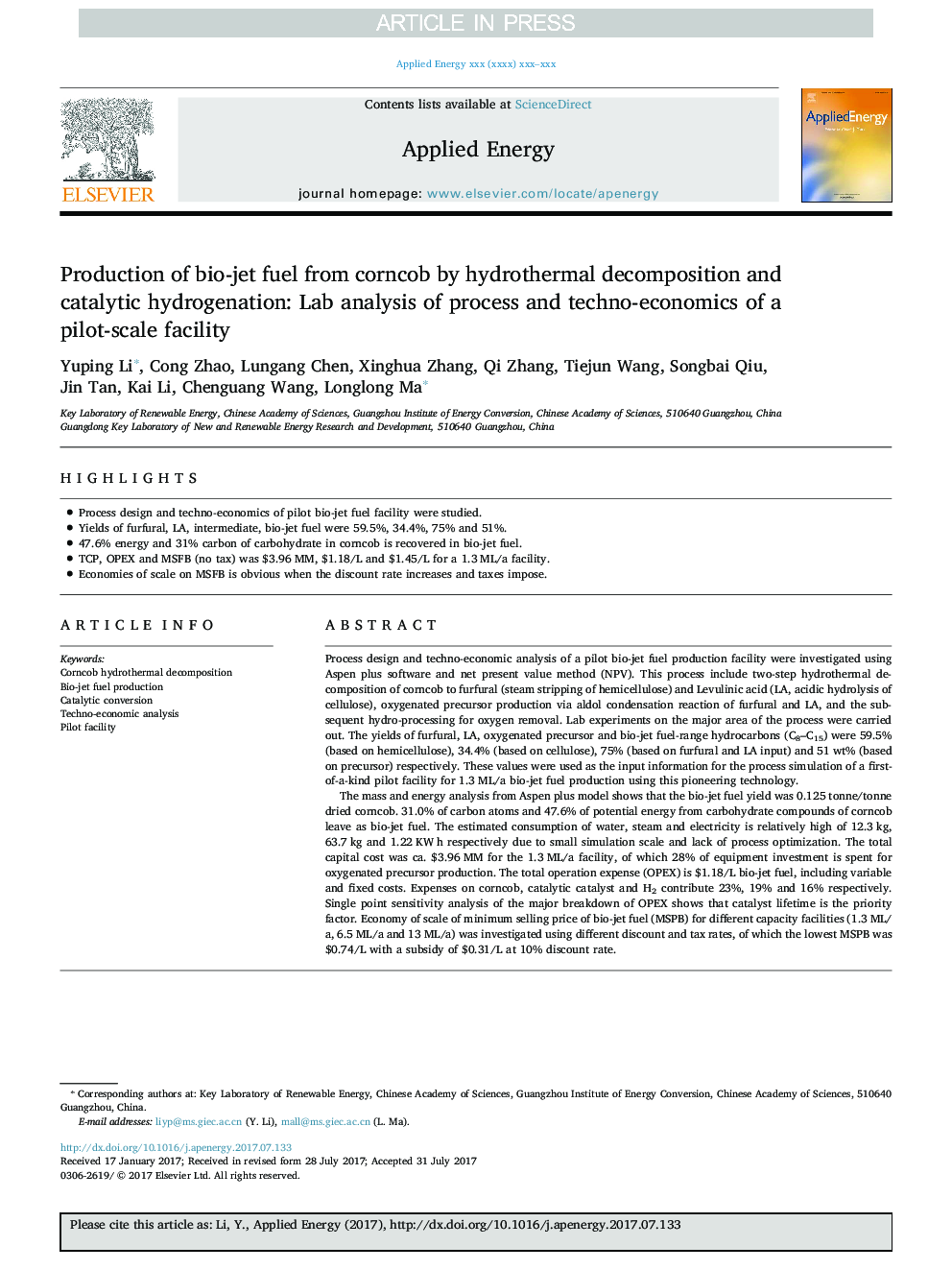| Article ID | Journal | Published Year | Pages | File Type |
|---|---|---|---|---|
| 8953433 | Applied Energy | 2018 | 9 Pages |
Abstract
The mass and energy analysis from Aspen plus model shows that the bio-jet fuel yield was 0.125Â tonne/tonne dried corncob. 31.0% of carbon atoms and 47.6% of potential energy from carbohydrate compounds of corncob leave as bio-jet fuel. The estimated consumption of water, steam and electricity is relatively high of 12.3Â kg, 63.7Â kg and 1.22Â KWÂ h respectively due to small simulation scale and lack of process optimization. The total capital cost was ca. $3.96Â MM for the 1.3Â ML/a facility, of which 28% of equipment investment is spent for oxygenated precursor production. The total operation expense (OPEX) is $1.18/L bio-jet fuel, including variable and fixed costs. Expenses on corncob, catalytic catalyst and H2 contribute 23%, 19% and 16% respectively. Single point sensitivity analysis of the major breakdown of OPEX shows that catalyst lifetime is the priority factor. Economy of scale of minimum selling price of bio-jet fuel (MSPB) for different capacity facilities (1.3Â ML/a, 6.5Â ML/a and 13Â ML/a) was investigated using different discount and tax rates, of which the lowest MSPB was $0.74/L with a subsidy of $0.31/L at 10% discount rate.
Related Topics
Physical Sciences and Engineering
Energy
Energy Engineering and Power Technology
Authors
Yuping Li, Cong Zhao, Lungang Chen, Xinghua Zhang, Qi Zhang, Tiejun Wang, Songbai Qiu, Jin Tan, Kai Li, Chenguang Wang, Longlong Ma,
